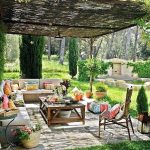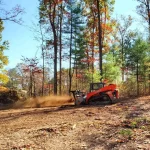Make the most of your garden’s potential by selecting shade-tolerant plants to add colour to even the deepest nooks and crannies.
Finding plants for shade can be challenging because most plants like full or at least partial sunshine. We frequently disregard shady regions, disregarding them as potential planting locations. Fortunately, you can incorporate a variety of shade-loving plants into your garden plans to provide stunning displays in these darker spaces.
Many gardeners decide to use shaded areas in their yard for storage sheds, compost bins, or simply a place to keep garden equipment while it’s not in use. These areas are frequently ignored, but you need to be resourceful if your garden has a prominently located shaded part or if the majority of the garden is shaded.
If you choose the correct shade plants to bring life to them, shaded regions in your garden can become striking and lovely features.
- HOSTA
Hostas can be as small as 4 inches or as large as 6 feet across. But be cautious; deer and rabbits enjoy these perennials. Consider growing a less tasty plant in your garden if deer frequent it.
It is clear why this plant is regarded as the queen of the shadow garden. Hosta is cultivated for its lovely leaves, which come in a wide range of hues, patterns, forms, and dimensions, from teacup to truck tyre. This resilient plant does well when given rich, well-amended soil and regular watering. It is consistently hardy in cooler climates. Many types can grow in harsh conditions, including heavy shade and beside trees. Many shade-loving wild plants, such as coral bells, ferns, and columbines, go nicely with them. You’ll have years of dependable color in the garden with these hardy favorites.
Table of Contents
2. Astilbe
The perennial astilbe has stunning, spectacular flowers on top of fern-like, glossy foliage. Astilbe, a plant resistant to deer, comes in a variety of colours and looks best when planted in clusters rather than alone. As the seasons later, they also present fascinating textures.
Depending on the kind, asters have bloom clusters that range in size from 6 inches to 2 feet and in height from 6 inches to 5 feet. Astilbes are a wonderful way to bring colour and texture to a shady area if you have one, since other flowers won’t do well there.
- Hellebores
Growing hellebores, often known as winter roses, is a lovely way to spruce up a shaded area with colour and charm. They also flower in the winter, making them among the best winter flowers and particularly appealing to pollinators just emerging from hibernation. The blossoms come in a variety of hues, including deep red, pinks and purples with specks, and even greenish white. They are also tame, clump-forming plants that require very little upkeep.
Rich, well-drained soils and full or partial shade are preferred by hellebores. Hellebores are simple to grow and can be multiplied via division, but they dislike being moved after they are established, making it risky to divide a root ball.
4. Ligularia
Ligularia, sometimes known as “leopard plant,” is a great plant for any shade garden, and not just because deer don’t like to eat it. The plant’s eye-catching, purplish-red leaves are one of its other appealing features, says Daryl Beyers, editor of The New Gardener’s Handbook. Another type has yellow, daisy-like flowers, and a third is known as “The Rocket” and has spikeier blooms. This can be your best option if you’re seeking a plant with a huge leaf structure.
- Hydrangea
Gardeners love hydrangeas for the variety of flower colours and forms that they produce. Others appear smaller and flatter, while some bloom in enormous, rounded clusters. The majority of hydrangea species thrive in the light shade provided by large deciduous trees or trees that lose their leaves in the winter. While excessive heat and sunlight might cause the plant to wilt, insufficient light will diminish the number of flowers produced. They should, ideally, receive morning sun and afternoon shade. On especially hot days, make sure to provide them with additional water.
6. Foamy Bells
Every shade garden requires a few accent plants in chartreuse to break up the otherwise green space. ‘Eye Spy’ has bright yellow leaves in the spring with rosy crimson centers, which fade to chartreuse throughout the summer. Starting in late spring and lasting for several weeks, the mounded foliage is covered by an abundance of bubblegum pink flower panicles on red stems.
With only the occasional watering needed for growth, this perennial thrives beautifully in landscape borders and containers. For a striking contrast with minimal maintenance requirements throughout the seasons, try planting it alone in an 8–12″ container next to your flowering annuals.
- 7. Caladium
Caladium plant is extremely beautiful because of its enormous, heart-shaped leaves! Read the plant label to be certain of what you have because some more recent varieties require light. They are perennial in warm regions (zone 10 or warmer), but you can enjoy them as a houseplant in colder climates by bringing them inside for the winter. The plant can grow up to 24 inches broad and up to 3 feet tall.
- Foxglove
Foxgloves are loved by hummingbirds and gardeners alike for their beautiful, brilliant blossoms and simple regrowth. The tubular-shaped flowers, which come in spiky clusters that grow vertically, are coloured purple, pink, red, yellow, lavender, and white.
Foxgloves are biennial plants that bloom in their second year after producing a clumped rosette of leaves in their first. The good news is that because foxgloves drop their seeds, you don’t need to replace them every two years. If you don’t want these plants to reseed in your garden, cut the bloom heads.
- Ferns
Ferns are among the oldest surviving plants, having existed since the time of the dinosaurs. These dependable perennials are cultivated for their lovely fronds, which add texture and form to the environment. They are an essential component of any forest or shade garden. There are numerous plants that would thrive well in gardens and are suited to a variety of environments.
Most demand rich soil and lots of moisture, although others, like Western sword fern (Polystichum munitum), are drought-tolerant after establishment, making them a viable choice for difficult locations like dry shadow. Almost every forest shade plant, including primrose (Primula), bishop’s hat (Epicedium), hosta (Hosta), masterwort (Astrantia), and wood sorrel (Oxalis), pairs nicely with ferns.
10. Lily Of The Valley
A delicate and exquisite shade plant is the lily of the valley. This is a timeless option that was used in Kate Middleton’s bridal bouquet and will always make you happy. A clump of Lily of the Valley can be divided, or you can buy a plant or several bulbs.
Lily of the Valley can be divided by carefully lifting the plant out of the ground and using your hands to pry some of the bulbs apart. If you can, keep them in tiny groups of no more than 2 or 3. If the roots are entwined, you might need to cut part of them with a sharp knife. After that, replant them where you want them to flourish.
Be cautious if you put these shade-loving plants in locations where children might play, though, as they are poisonous.






